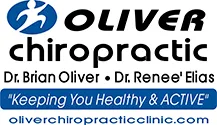The Causes and Symptoms of Sciatica and How to Treat Them
One of the defining aspects of chiropractic is concern with how problems in the nerves and musculoskeletal system affect each other. The spinal column isn’t just what supports your bones and muscles, as important as that is. It’s also the origin of the nerves that lead throughout the body, and when there’s a problem in the spinal column, nerves can be pinched at their origin. Sciatica is one of the most common forms of nerve impingements people seek chiropractic care for. This condition describes problems in the sciatic nerves, which travel the length of the lower limbs. In this month’s newsletter, we’ll examine what sciatica feels like, what can cause it, and what a chiropractic office can do to help you.
Symptoms of Sciatica
The sciatic nerve is the largest nerve in the human body, and there’s one on each side. Each one emerges at five points along the lumbar vertebrae in the lower back and the sacrum, with the nerve roots bundling together in the pelvic region, weaving through the pelvis’s deep muscles, and dividing again as they travel down the leg and into the foot. Compression of the sciatic nerve could result in shooting pain, numbness, or tingling along its length. In some people pain is constant; but in others, it comes and goes. It is common for a person to feel pain in one part of their leg and numbness in another, but usually, only one leg is affected. In extreme cases, sciatica can inhibit a person’s control of their bowels or bladder.
Potential Causes
Sciatica is, by definition, pain or dysfunction resulting from a problem with the sciatic nerve, and not just any radiating problem in any structure of the lower limbs. However, there are still a few ways the sciatic nerve can be compressed by inflammation or dislocation of a different body part. A problem in the lumbar spine such as a herniated disc or a spur on a vertebrae could compress one of the sciatic nerve’s roots. The nerve could also be compressed by inflammation in the muscles it passes near or through, such as piriformis muscles that connect the sacrum to the femur. Discs are more likely to become herniated if they have degenerated, which is a common part of aging, or if a person is too heavy or doesn't have the core strength to share their weight between their core muscles and spinal column. Bone spurs are likely to develop if the cartilage between a person’s facet joints is wearing away, which could also be related to poor posture or overuse of the joints and nearby muscles. Pelvic muscles can become inflamed in response to degradation of the joint connecting the sacrum to the pelvis’ iliac bones. During pregnancy, a woman’s ligaments loosen, which also makes spinal misalignments more likely.
Identification and Treatment
Herniated discs and bone spurs are the most common causes of sciatica, and other causes are identified largely through the process of elimination. Chiropractors will put their patients through range-of-motion tests and tactile examinations to determine likely points of impingement, and may order imaging tests.
Treatments are focused on reducing inflammation and correcting misalignments. Spinal adjustments are often performed to reduce pressure from herniated discs, and some offices do this while a patient is undergoing spinal decompression. Electric muscle stimulation, low level laser therapy, and massage therapy may also be used to reduce inflammation in the muscles, preparing them to undergo therapeutic exercises.
The best way to prevent the return of sciatica is to keep the lower back and limb muscles strong and flexible enough to relieve the weight on the spinal column and allow the muscles to glide over joints easily. Chiropractors often advise people on safe exercises and changes they can make to their lifestyles to use more efficient posture. Although sciatica usually clears up, nerve damage can be permanent, and you shouldn’t have to endure pain or numbness while you recover. Chiropractic offices provide several non-invasive, non-addictive ways to help you feel better and protect yourself from relapses.
